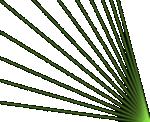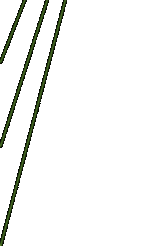Let's consider concrete
example. Let us want to determine exposing time of the hologram in the of copying scheme
described on our site in the section "Physical principles".
For the hologram recording are used He-Ne laser and photoplate PFG-03 with energy of
exposing 1000 mkJ/cm2.
The
measurement of object beam at centre of a photoplate
gives value of a photocurrent - 0.2 mkA. The measuring
of reference beam on the brightest place gives value
of a photocurrent - 0.05 mkA.
The summary
photocurrent from both beams is equal 0.25 mkA. We multiply this value on scaling
coefficient for a wave length 633 nm and it gains illumination intensity of photoplate:
Next, we divide known
value of exposing energy for photoplates PFG-03 on the received value of illumination
intensity and it gained required time of exposing:
The received time of
exposing is optimum time for this illumination intensity of a photoplate PFG-03.
In
summary we give several concrete recommendations:
-
 Beforehand
learn optimum energy of exposing for photoplates
from the manufacturer, if it is not written
on a box.
Beforehand
learn optimum energy of exposing for photoplates
from the manufacturer, if it is not written
on a box.
-
Hold a photosensitive surface
of the photodiode in a parallel plane of a photoplate
(especially it concerns reference beam measurements)
and closer to it, if possible. In other case
value of illumination intensity will be measured
incorrectly.
-
Keep uniformity of a reference
beam on surface of a photoplate. More than 30%
from illumination intensity at centre does not
suppose wane of illumination intensity on edges
of a photoplate. It is possible to do these
measurements with the help of the photodiode
- just on value of a photocurrent. Do not rely
upon your eyes - they can't compare soft illumination
intensities.
-
The optimum relation of illumination
intensities from reference and object beams
is 1:4-1:5 (therefore, reference beam should
be in 4-5 times brighter than object beam).
Here we mean the brightest places of an object
beam. At reduction of a relation of illumination
intensities the occurrence of a "overmodulation"
is possible, when the brightest areas of object
on the image suddenly become darker than other
areas. It frequently happens at shooting blinking
objects - mirrors or glass objects, polished
metals etc.-->





